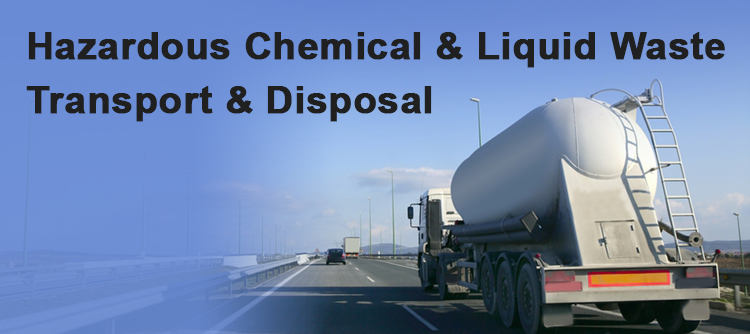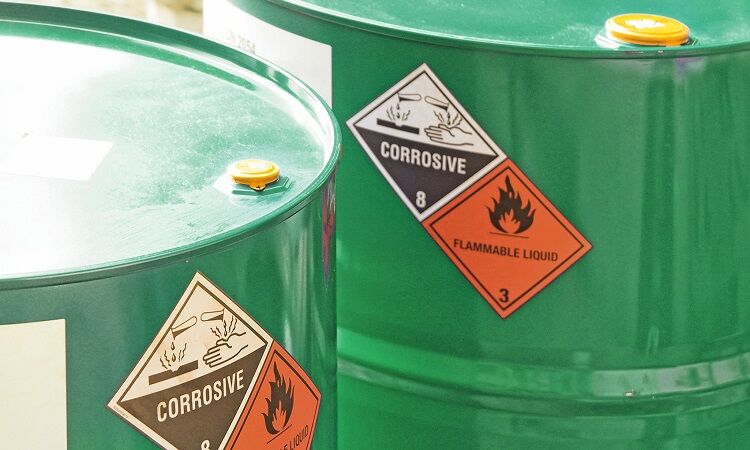Leading Industrial Wastewater Treatment Solutions: Ensuring Compliance and Performance
Leading Industrial Wastewater Treatment Solutions: Ensuring Compliance and Performance
Blog Article
Exactly How Liquid Waste Disposal Functions: A Comprehensive Summary of Methods and Technologies Utilized

Introduction of Liquid Waste Types
The intricacy of fluid waste types necessitates a comprehensive understanding of their attributes and ramifications for disposal. Liquid waste can broadly be classified into a number of kinds, including industrial, municipal, farming, and harmful waste. Each classification displays distinct residential properties, requiring specific administration techniques to mitigate environmental and health and wellness dangers.
Industrial fluid waste originates from manufacturing procedures and commonly consists of a variety of pollutants, such as hefty steels, solvents, and natural substances. Municipal liquid waste, largely comprising wastewater from families and industrial facilities, consists of raw material, nutrients, and virus (industrial wastewater treatment). Agricultural liquid waste, including overflow from farms, might have fertilizers, pesticides, and animal waste, posturing dangers to water high quality and environments
Unsafe liquid waste is defined by its toxicity, reactivity, or prospective to trigger damage. Understanding these diverse liquid waste kinds is crucial for creating effective disposal approaches and making certain compliance with ecological guidelines.
Physical Therapy Techniques

Testing is the first step, where bigger fragments and debris are removed from the liquid waste utilizing displays or grates. This process secures downstream devices from damages and makes sure smoother procedure. Following testing, sedimentation uses gravitational pressure to different solids from fluids. In sedimentation storage tanks, heavier particles clear up at the base, developing a sludge layer, while the made clear liquid can be further dealt with.
Filtration is one more necessary approach that involves passing the liquid through porous products, such as sand or membranes, to catch smaller sized bits. This step improves the top quality of the liquid, making it appropriate for subsequent treatment processes.

Chemical Treatment Techniques
Chemical treatment techniques are essential for successfully taking care of fluid waste, particularly in attending to liquified and colloidal impurities that physical methods may not appropriately get rid of. These methods utilize different chemical agents to counteract, speed up, or transform harmful substances into much less unsafe types.
One typical approach is coagulation and flocculation, where chemicals such as alum or ferric chloride are contributed to promote the aggregation of put on hold fragments. This process enhances sedimentation, permitting easier elimination of the resulting sludge. Furthermore, oxidation procedures, utilizing agents like chlorine or ozone, are utilized to break down complex organic substances and pathogens, making the waste safer for discharge or additional treatment.
Neutralization is an additional essential strategy, which adjusts the pH of acidic or alkaline waste streams to neutral degrees, protecting against possible harm to downstream systems and the atmosphere. Moreover, advanced oxidation procedures (AOPs) web use mixes of oxidants and ultraviolet light to degrade relentless toxins, attaining a greater degree of therapy efficiency.
Organic Therapy Procedures
Biological therapy procedures play a vital role in the administration of liquid waste by utilizing microorganisms to break down natural matter and minimize pollutant degrees. These processes can be broadly classified into anaerobic and cardio treatments, each utilizing a fantastic read details microbial neighborhoods to accomplish efficient waste degradation.
Aerobic treatment involves making use of oxygen to facilitate the malfunction of natural products by germs. This process is commonly applied in triggered sludge systems, where oygenation storage tanks give a favorable environment for microbial development, bring about the oxidation of natural contaminants. The resultant biomass can be divided from dealt with effluent with sedimentation.
On the other hand, anaerobic therapy happens in the lack of oxygen, depending on various bacteria to damage down organic issue. This technique is specifically advantageous for high-strength waste, as it creates biogas, a renewable resource source, while decreasing sludge manufacturing. Technologies such as anaerobic digesters are often utilized in industrial and local applications.
Both cardio and anaerobic biological therapies not only lessen the environmental impact of fluid waste however also help with resource recuperation, making them crucial components of lasting waste administration strategies. Their effectiveness, performance, and adaptability support their prevalent execution across different markets.
Emerging Technologies in Disposal
Cutting-edge strategies to liquid garbage disposal are rapidly developing, driven by innovations in technology and an enhancing emphasis on sustainability. Among these emerging technologies, membrane layer bioreactors (MBRs) have gained grip for their capability to combine organic therapy with membrane layer filtering, causing high-grade effluent that can be reused in different applications. MBRs allow smaller sized impacts and extra efficient operations contrasted to standard systems.
An additional promising advancement is making use of anaerobic food digestion combined with nutrient recovery innovations, which not only treats fluid waste however additionally generates biogas and recuperates important nutrients like nitrogen and phosphorus. This double benefit improves source performance and reduces ecological influence.
Furthermore, advanced oxidation blog processes (AOPs) are being adopted for the degradation of complex organic toxins. These methods use powerful oxidants and stimulants to break down contaminants at the molecular degree, providing a very efficient solution for challenging waste streams.
Moreover, the assimilation of expert system and artificial intelligence in waste administration systems is optimizing functional efficiency and anticipating maintenance, bring about minimized expenses and boosted environmental compliance. These technologies mirror a considerable shift towards more sustainable and effective liquid waste disposal practices.
Verdict
In verdict, efficient fluid waste disposal necessitates a thorough understanding of various methods and modern technologies. By continually progressing these approaches, it comes to be feasible to deal with the growing challenges connected with liquid waste, ultimately contributing to ecological protection and source healing.
Liquid waste disposal is a crucial element of ecological administration, requiring an extensive understanding of numerous techniques and innovations tailored to different waste kinds. Liquid waste can extensively be classified into numerous kinds, consisting of commercial, community, agricultural, and hazardous waste. Agricultural liquid waste, including runoff from farms, might have fertilizers, pesticides, and pet waste, posturing risks to water quality and communities.
Numerous physical treatment approaches play a crucial role in handling liquid waste properly - industrial wastewater treatment.In final thought, effective fluid waste disposal requires an extensive understanding of different techniques and modern technologies
Report this page